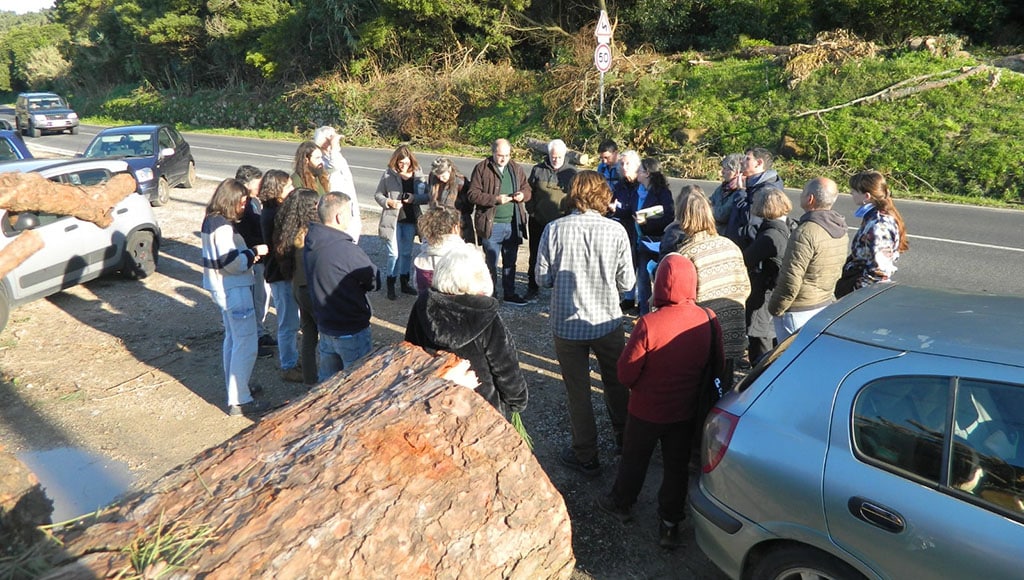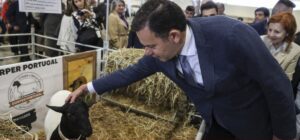1,400 trees felled, residents tell Expresso
The felling of trees in the heraldic Sintra-Cascais Natural Park, between the villages of Almoçageme and Azoia, resulted in “661 prunings and 480 trees felled, including 183” of “invasive exotic species”, Infraestruturas de Portugal claims.
Environmentalists put the number so much higher.
Talking to Expresso, Susana Félix from the Group of Friends of Sintra Trees (GAAS) has said this protected area of landscape has lost 1,400 trees.
“This situation is absolutely inadmissible. They are desertifying one of the most beautiful stretches of the Sintra hillside, which leads to the sea and lighthouse at Cabo da Roca. These were healthy trees that made up the landscape and made Sintra a bucolic town”.
Félix, who walks part of the regional stretch between Colares (Sintra) and Cascais on the National Road 247 every day, has described the tree cutting that “started before Christmas” and is still ongoing as “a massacre”.
Also interviewed by State news agency Lusa, she said: “they have basically cut down maritime pines and eucalyptus”, damaging cork oaks in the process (…) “these are spectacular trees, some with huge trunks”, estimated at being “75 years old” or even more.
The whole operation “is a disgrace” and should be stopped immediately, she said. This is “an emblematic road, which is used as a tourist route“; it is still “within the park and protected area of Sintra-Cascais.
“It is indecent to cut down trees of this size,” Félix railed, pointing to the “scenic, tourist and cultural value” of an area between the Sintra and Cascais coastlines.
“Sintra has monuments that are known worldwide; they are world heritage sites. Sintra is the green, Sintra is the trees, it is the wooded landscape, it is the centuries-old trees. If we don’t preserve this, what will be left?”.
In protest to this ongoing cull, GAAS organised a sit-in near the area of IP’s ‘interventions’, which brought together representatives of associations such as ADN Environment, Platform in Defence of Trees, Sintra without Herbicides, Lisbon for People and Quercus, as well as parties like the Left Bloc and LIVRE.
“We must seek explanations from those who perpetuated these acts, without clarification to the public, without phytosanitary reports, without appeal or prejudice,” said GAAS’ Florbela Veiga Frade.
She particularly lamented the felling of “at least one century-old pine tree” and several trees from which “all the branches were cut off, leaving only the trunk to be felled later”, in a “Dantesque scenario“.
“Apparently they are basing their intervention on controlling the fuel mass and felling acacia trees, considered an invasive species, which they have also cut down. But in doing so, they have wiped out trees that will be very difficult to replace, given the length of time they take to reach such an imposing height.”
In a statement sent to Lusa, IP said that the felling and pruning of trees carried out on the section of the ER247, between kilometres 71.960 and 87.480 in the union of the parishes of Sintra and the parish of Colares, “was the last phase of work that began around two years ago, and its main objective was to implement fuel management lanes”, in order to “ensure safe circulation conditions for people and goods on the roads” under its direct management.
The work carried out in phases, “over the last two years, included a total of 661 prunings and 480 tree fellings, 183 of which were of invasive exotic species,” said the road network management body.
The type of work involved, in general terms, “pruning sycamores along the route between Sintra, Colares and Pé da Serra, with a view to improving safety conditions for road and pedestrian traffic on the ER247”, and “cleaning, felling and pruning on the route between Pé da Serra and Cabo da Roca”, also to “comply with the special criteria defined for the Sintra-Cascais Natural Park area in the Sintra Municipality’s forest fire defence plan”.
According to IP, taking into account the purpose of the felling, within the scope of integrated rural fire management, the removal of invasive species “and thinning to remove canopies” and “the fact that most of the species in question are eucalyptus, maritime pines and invasive exotic species”, the concept of compensation does not apply, as these are measures aimed at improving and protecting the forest area.
The company clarifies that the materials resulting from pruning or felling “are sent to an appropriate final destination”, in accordance with waste legislation and environmental provisions, “as contractually established with the executing organisation”.
IP added that tree pruning and felling activities “are always preceded by a specialised technical assessment to determine the need for the work” and that, in this case, “given that it is a protected area, prior authorisation was obtained from the ICNF [Institute for Nature Conservation and Forests] and communicated to Sintra town council”.
Susana Félix remains deeply unimpressed: “I think there should be more appreciation for trees, there should be more esteem, they are living beings, they give us a lot, people live a life of distraction but a tree is extremely important, and especially at a time when we are living with climate problems, with immense pollution”.
GAAS is thus sending letters out to “various official bodies” and will be preparing “actions with other organisations”.
An official source at Sintra town hall confirmed that IP had informed the council of the work, which forced traffic restrictions in the area.
Lusa contacted the ICNF, which promised to clarify the matter at a later date.
Source material: LUSA/ Expresso


























